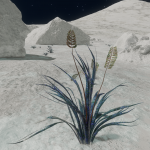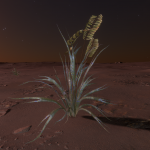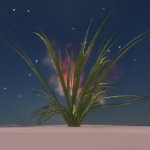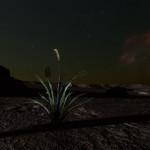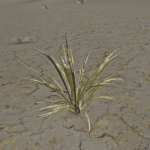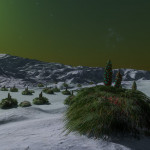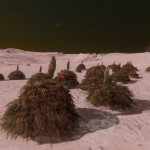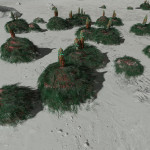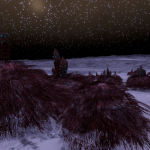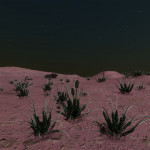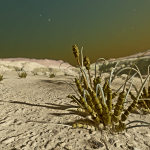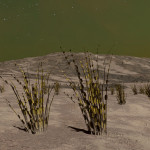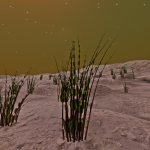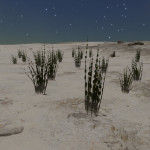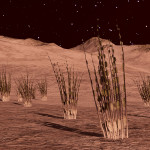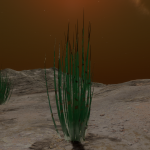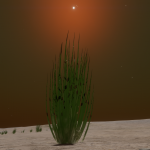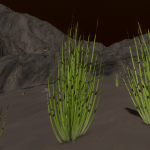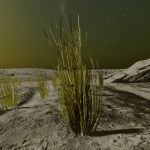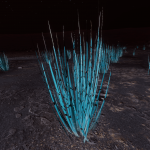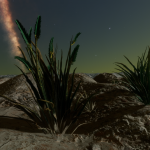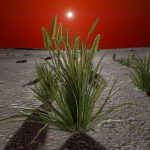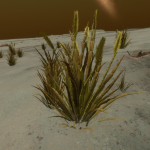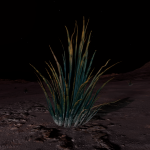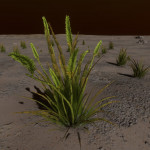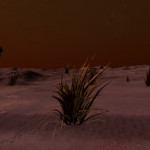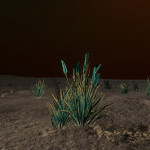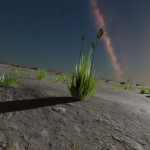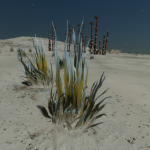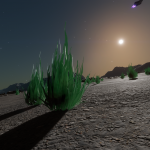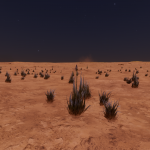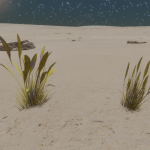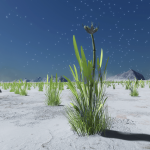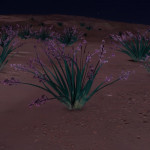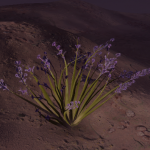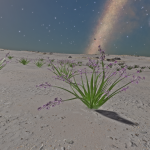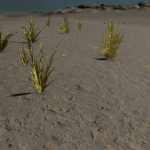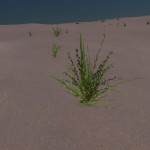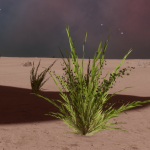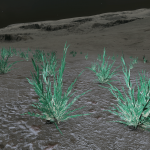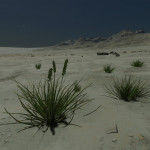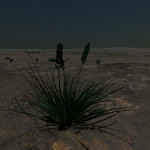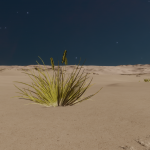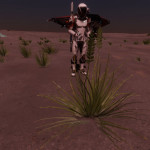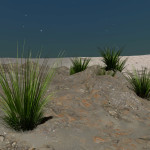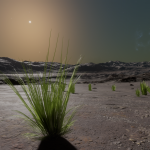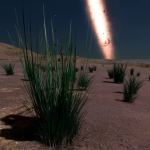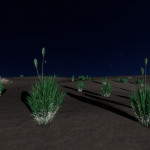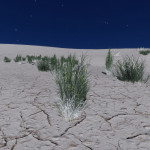Tussock genus
Description
Robust photosynthetic plants similar in appearance to clump grasses. They have a shallow but complex root structure, which requires a solid surface to produce structural stability. Clumps may form through tillering or wider dispersal through a variety of seeding mechanisms. Some species have adapted cellular structures containing high sugar concentrations to protect against freezing damage.
Minimum distance between two genetic samples: 200 m
Conditions of occurrence
- Planets with thin atmosphere
- Rocky planets
- Maximum gravity: 0.27
| Atmosphere type | Species |
|---|---|
| Methane, Methane-rich Argon, Argon-rich | Tussock Capillum |
| Ammonia | Tussock Catena Tussock Cultro Tussock Divisa |
| Carbon dioxide Carbon dioxide rich | Tussock Propagito (< 195 K) Tussock Pennatis (< 195 K) Tussock Pennata (145 k - 155 K) Tussock Ventusa (155 K - 160 K) Tussock Ignis (160 K - 170 K) Tussock Serrati (170 K - 175 K) Tussock Albata (175 K - 180 K) Tussock Caputus (180 K - 190 K) Tussock Triticum (190K - 195 K) |
| Water, Water-rich | Tussock Virgam |
| Suphur dioxide | Tussock Stigmasis |
Colored variants
Colored variant determined by the parent star type:
| Star type | Color |
|---|---|
| O | |
| B | |
| A | |
| F | Yellow |
| G | Lime |
| K | Green |
| M | Emerald |
| L | Sage |
| T | Teal |
| TTS | |
| Y | |
| W | |
| D | Maroon |
| N | |
| Black Hole | Red |
Tussock albata
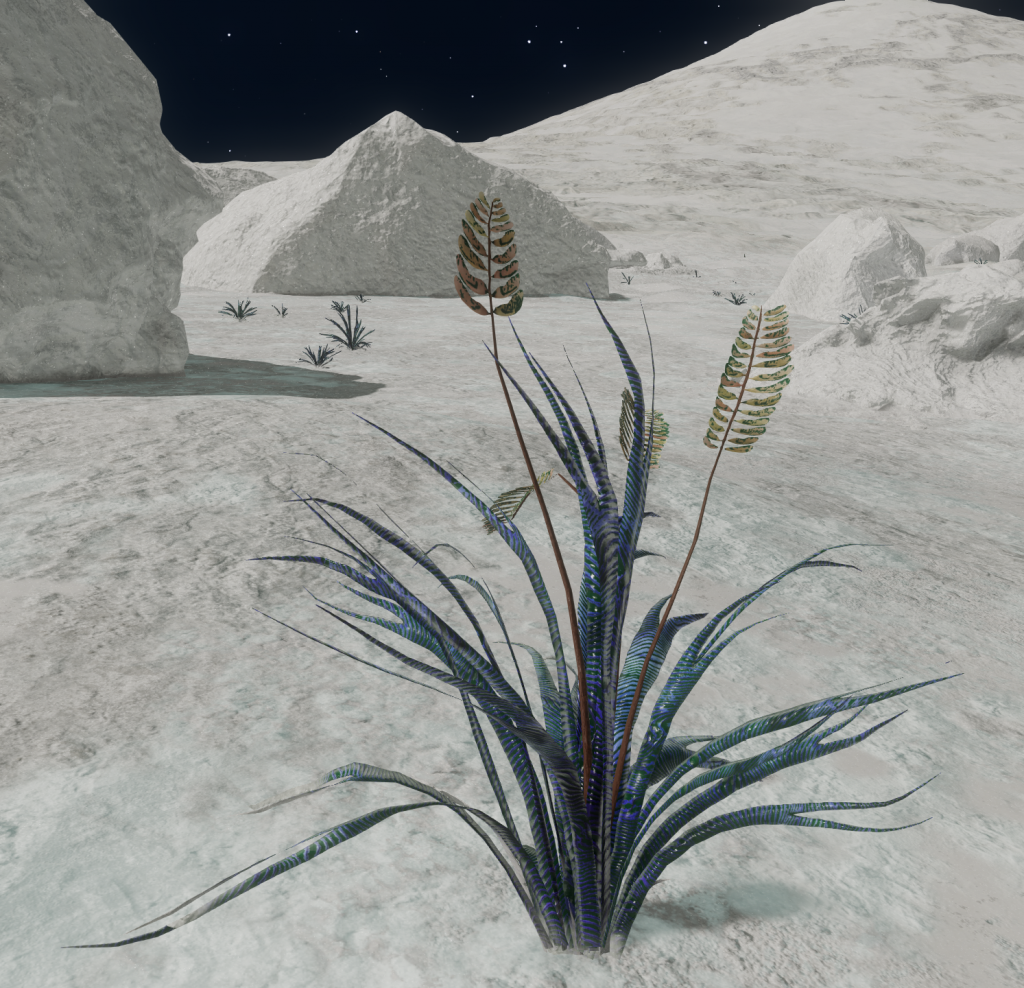
Description
A tussock species characterised by leaves with a distinctive striped pattern that are bisected like a snake’s tongue. Mature versions also sprout smaller leaves which produce spores.
Conditions of occurrence
- Planets with thin Carbon dioxide atmosphere
- Rocky planets
- Maximum gravity: 0.27
- Mean temperature between 175 K and 180 K
Colored variants
Colored variant determined by the parent star type (see above, genus Tussock)
Tussock capillum
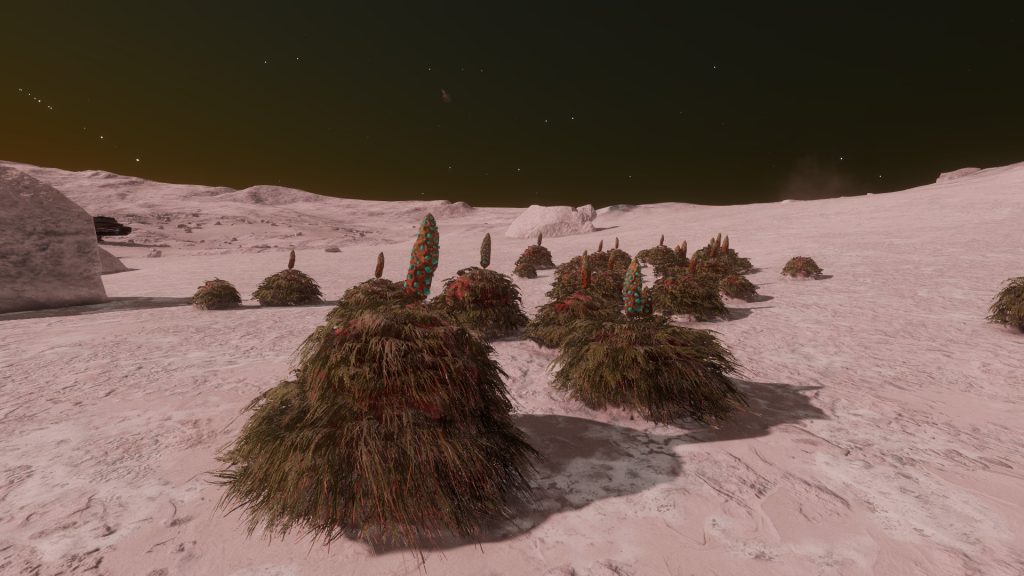
Description
This tussock species is a squat cluster of leaves resembling thick matted hair. From the top of these sprout thick pods that carw a number of round beans.
Conditions of occurrence
- Planets with thin Argon or Methane atmosphere
- Rocky planets
- Maximum gravity: 0.27
Colored variants
Colored variant determined by the parent star type (see above, genus Tussock)
Tussock caputus
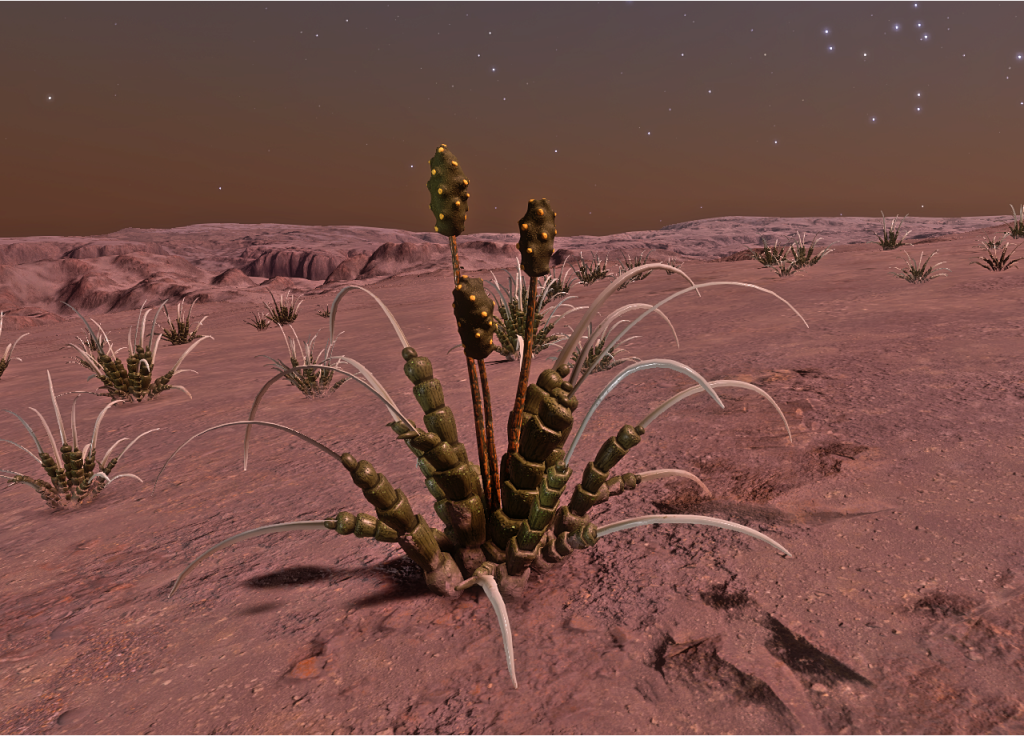
Description
A tussock species with leaves that have a thick segmented lower half and a willowy upper half. Mature versions produce separate stalks that carry ovoid organisms clotted with spores.
Conditions of occurrence
- Planets with thin Carbon dioxide atmosphere
- Rocky planets
- Maximum gravity: 0.27
- Mean temperature between 180 K and 190 K
Colored variants
Colored variant determined by the parent star type (see above, genus Tussock)
Tussock catena
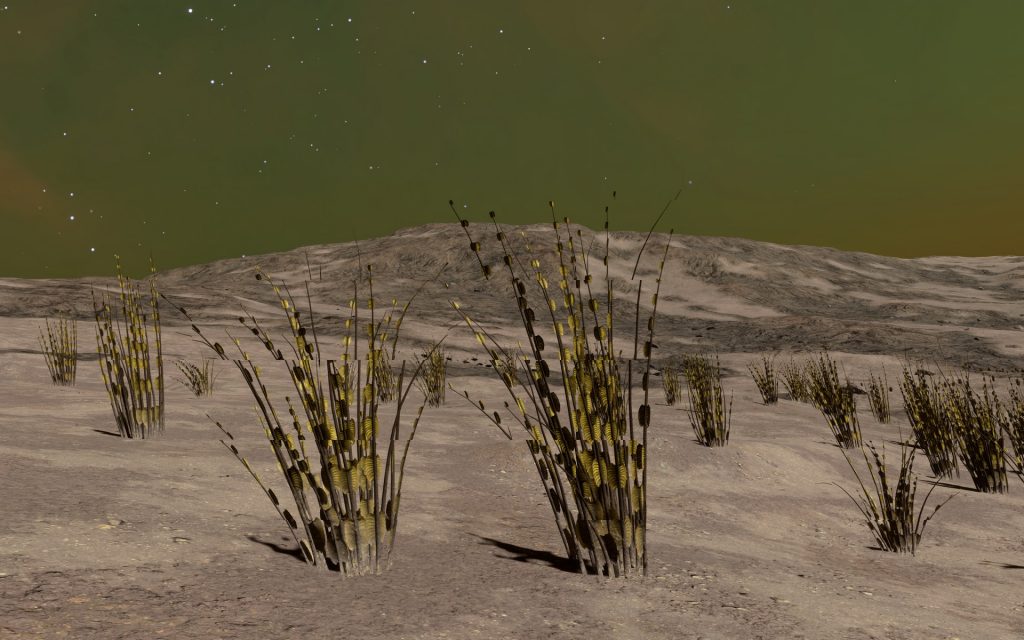
Description
This species of tussock has very thin stalks carrying twin sets of seed sacks along their entire length, resembling links on a chain.
Conditions of occurrence
- Planets with thin Ammonia atmosphere
- Rocky planets
- Maximum gravity: 0.27
Colored variants
Colored variant determined by the parent star type (see above, genus Tussock)
Tussock cultro

Description
A tussock species with tall sharp reeds reaching about two metres, characterised by narrow markings along their length.
Conditions of occurrence
- Planets with thin Ammonia atmosphere
- Rocky planets
- Maximum gravity: 0.27
Colored variants
Colored variant determined by the parent star type (see above, genus Tussock)
Tussock divisa
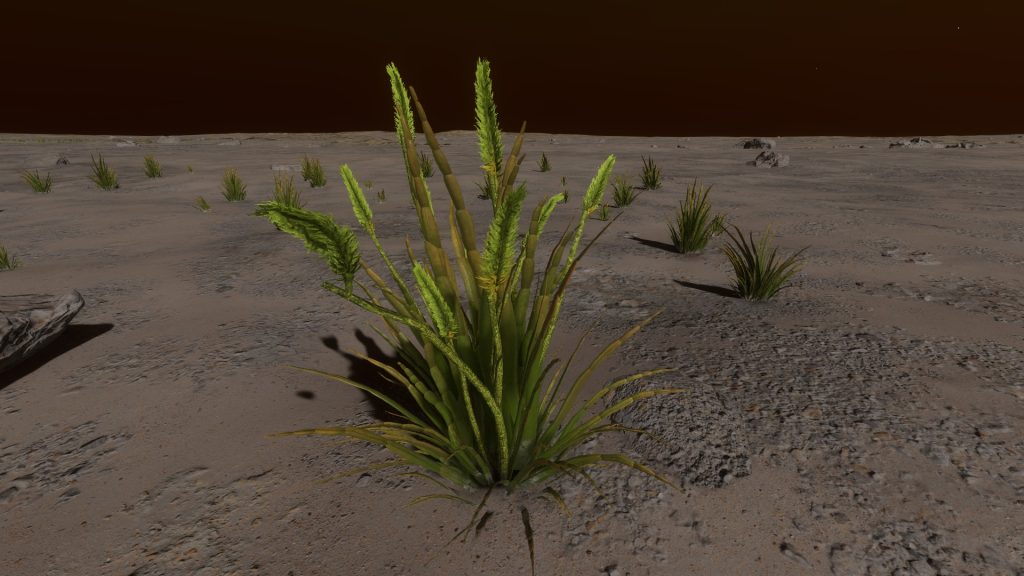
Description
This tussock species blends thick segmented lower growths with longer. narrower leaves. Mature versions have pale spores along the upper branches.
Conditions of occurrence
- Planets with thin Ammonia atmosphere
- Rocky planets
- Maximum gravity: 0.27
Colored variants
Colored variant determined by the parent star type (see above, genus Tussock)
Tussock ignis

Description
This tussock species produces thick intertwined leaves, above which sprout narrow stems crowned with seed pods.
Conditions of occurrence
- Planets with thin Carbon dioxide atmosphere
- Rocky planets
- Maximum gravity: 0.27
- Mean temperature between 160 K and 170 K
Colored variants
Colored variant determined by the parent star type (see above, genus Tussock)
Tussock pennata
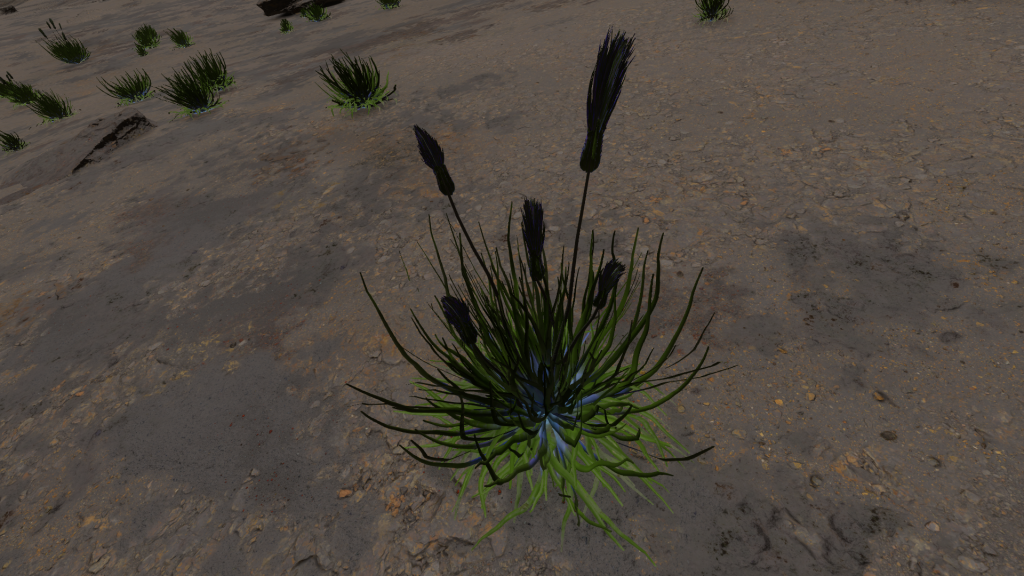
Description
A tussock species that extends large seed pods on thin stems above a cluster of bright leaves.
Conditions of occurrence
- Planets with thin Carbon dioxide atmosphere
- Rocky planets
- Maximum gravity: 0.27
- Mean temperature between 145 K and 155 K
Colored variants
Colored variant determined by the parent star type (see above, genus Tussock)
Tussock pennatis

Description
A tussock species with feather-shaped growths surrounding a single segmented stem which when mature is crowned with colourful seeds.
Conditions of occurrence
- Planets with thin Carbon dioxide atmosphere
- Rocky planets
- Maximum gravity: 0.27
- Mean temperature inferior to 195 K
Colored variants
Colored variant determined by the parent star type (see above, genus Tussock)
Tussock propagito
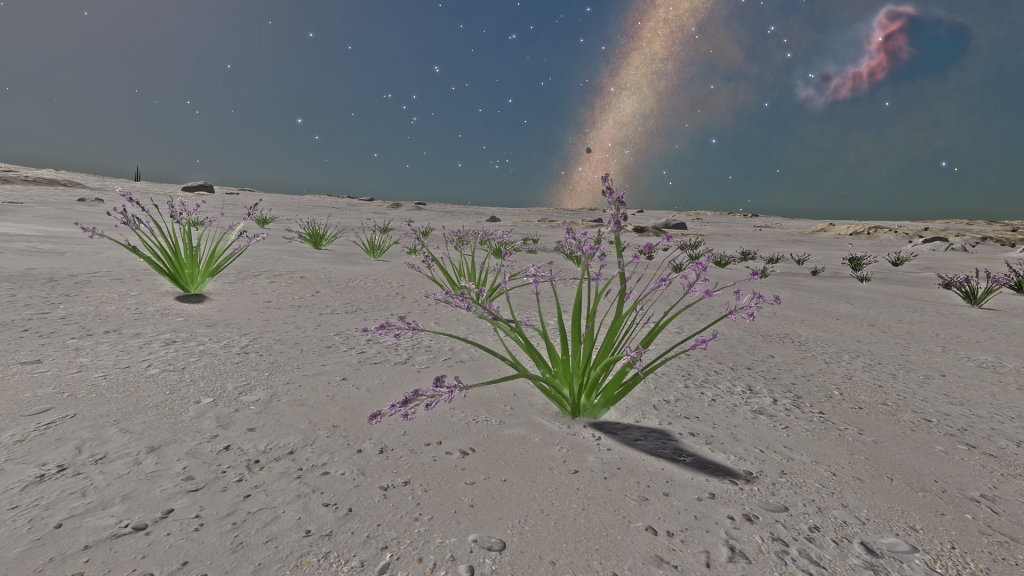
Description
A species of tussock that sprouts tapering leaves, with tips covered with colourful seed pods.
Conditions of occurrence
- Planets with thin Carbon dioxide atmosphere
- Rocky planets
- Maximum gravity: 0.27
- Mean temperature inferior to 195 K
Colored variants
Colored variant determined by the parent star type (see above, genus Tussock)
Tussock serrati
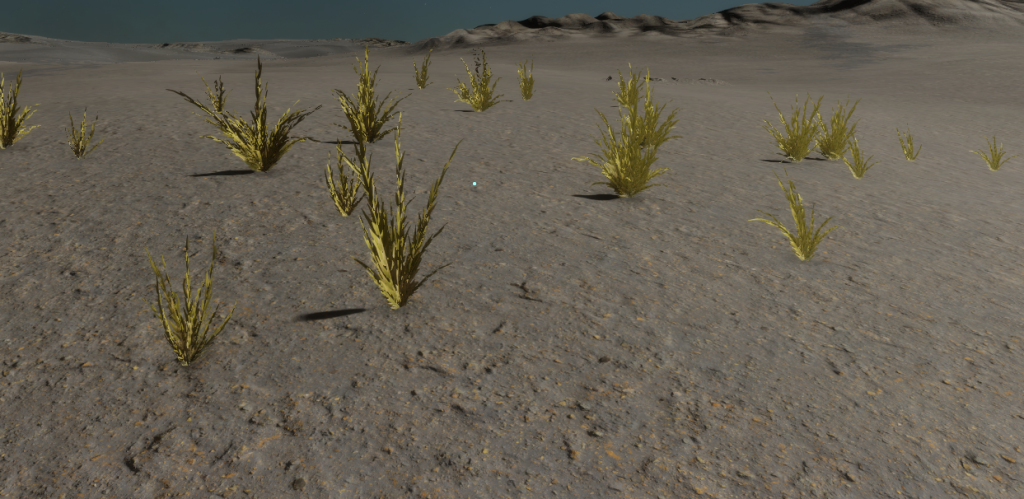
Description
This tussock species sprouts serrated leaves around thick stalks that produce dark seed pods.
Conditions of occurrence
- Planets with thin Carbon dioxide atmosphere
- Rocky planets
- Maximum gravity: 0.27
- Mean temperature between 170 K and 175 K
Colored variants
Colored variant determined by the parent star type (see above, genus Tussock)
Tussock stigmasis

Description
This tussock species resembles a patch of tough. wiry grasses. Taller stalks carrying disc-shaped seed pods rise above the main organism when mature.
Conditions of occurrence
- Planets with thin Sulphur dioxide atmosphere
- Rocky planets
- Maximum gravity: 0.27
Colored variants
Colored variant determined by the parent star type (see above, genus Tussock)
Tussock triticum
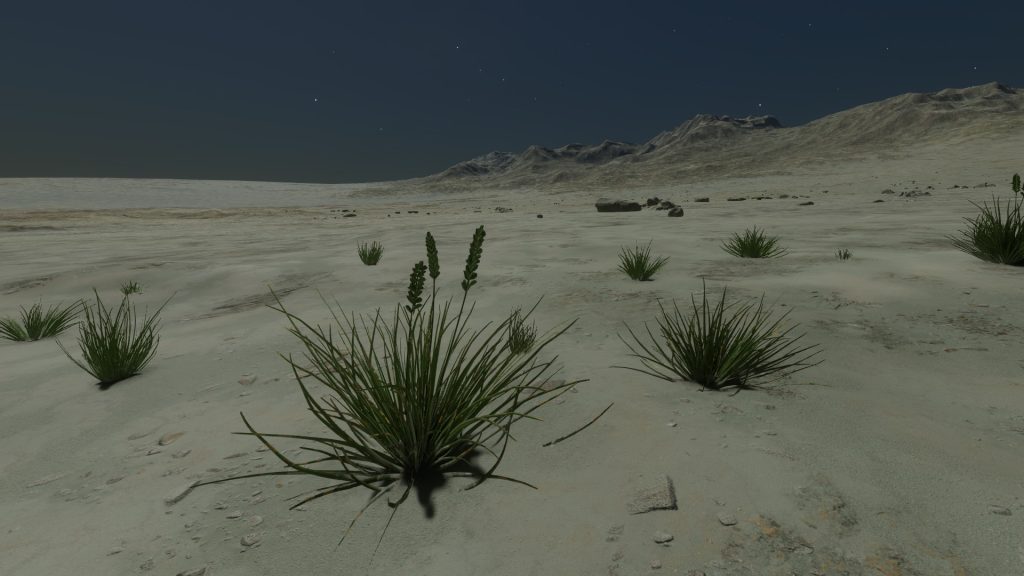
Description
A species of tussock with thin tough leaves marked with dark stripes. From these sprout taller stalks with small leaves, from which seeds are released to the winds.
Conditions of occurrence
- Planets with thin Carbon dioxide atmosphere
- Rocky planets
- Maximum gravity: 0.27
- Mean temperature between 190 K and 195 K
Colored variants
Colored variant determined by the parent star type (see above, genus Tussock)
Tussock ventusa
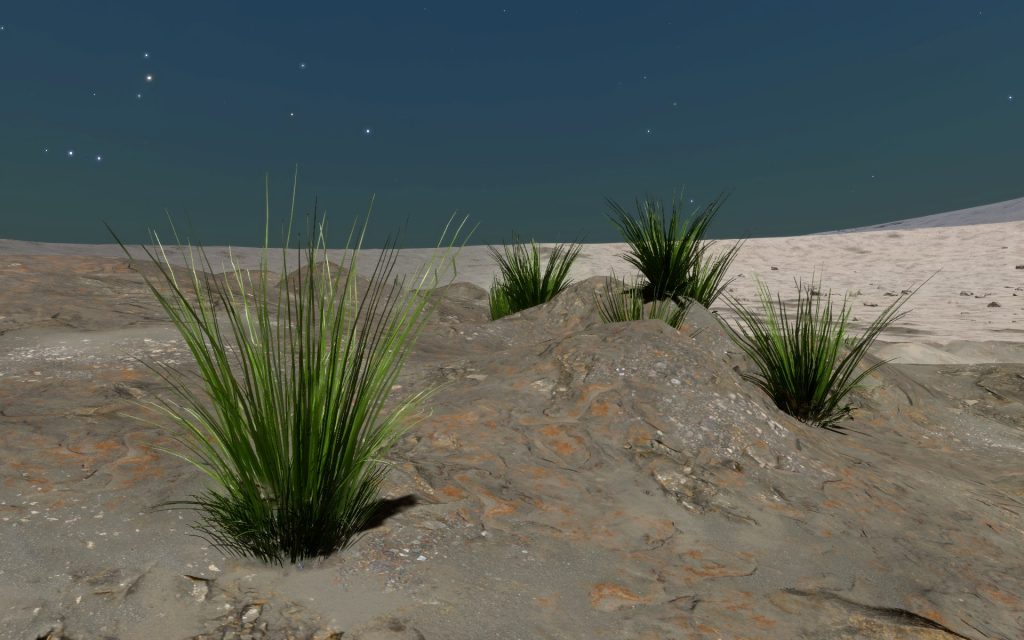
Description
A species of tussock that blends tough lower stalks with taller willowy reeds, which produce small pale spores.
Conditions of occurrence
- Planets with thin Carbon dioxide atmosphere
- Rocky planets
- Maximum gravity: 0.27
- Mean temperature between 155 K and 160 K
Colored variants
Colored variant determined by the parent star type (see above, genus Tussock)
Tussock virgam

Description
A species of tussock with thin reeds clustered around a central stalk. which is eventually crowned with spores.
Conditions of occurrence
- Planets with thin Water atmosphere
- Rocky planets
- Maximum gravity: 0.27
Colored variants
Colored variant determined by the parent star type (see above, genus Tussock)
